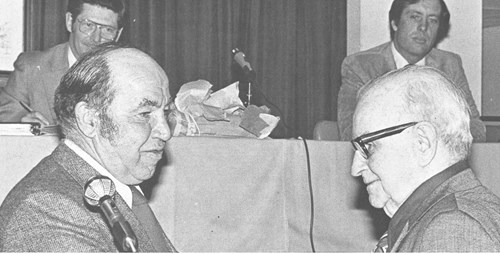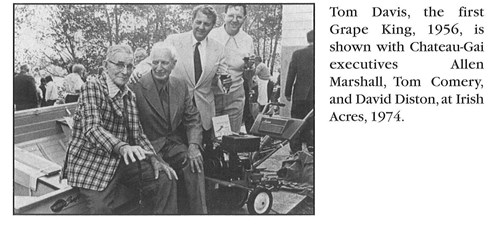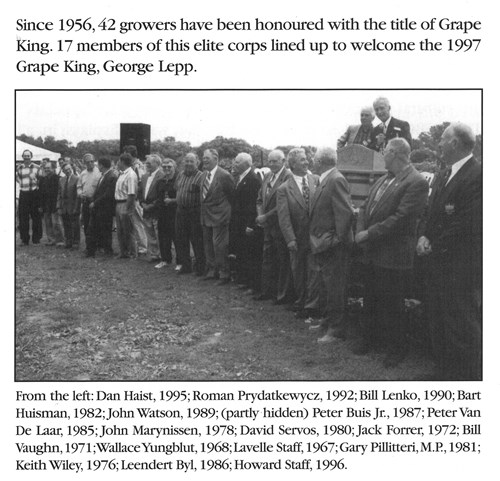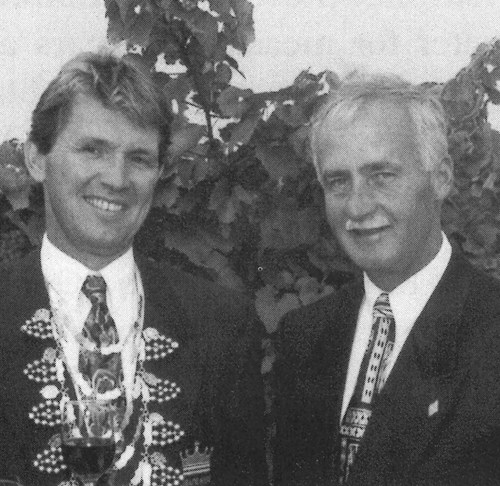The Grape King represents an over 60-year tradition in Ontario’s grape and wine industry. The title of Grape King, or Grape Grower of the Year, is bestowed upon an Ontario grape grower who exemplifies excellence in the vineyard.
Nominees for Grape King must have a working knowledge of vineyard management and the grape growing industry. Nominated vineyards are judged by industry experts from the Ontario Ministry of Agriculture, Food and Rural Affairs and the University of Guelph, and are rated on a point system based on the following criteria: Cultivars, Diseases, Insects, Weed Control, Soil Management, Canopy Management, Overall Quality of Vineyard, Outreach, and Miscellaneous.
Each year the Grape King receives a jacket and chains of office to be worn throughout the year while attending industry and government events, such as the Legislative Wine Tasting, Cuvée and Niagara Wine Festivals. The Grape King also represents Ontario grape growers at the Okanagan Spring Wine Festival in British Columbia, a trip sponsored by Farm Credit Canada, the Grape Growers of Ontario and the Niagara Grape and Wine Festival.
The Grape King is an ambassador and an advocate for all grape growers across Ontario as the grape and wine industry continues to move forward.




